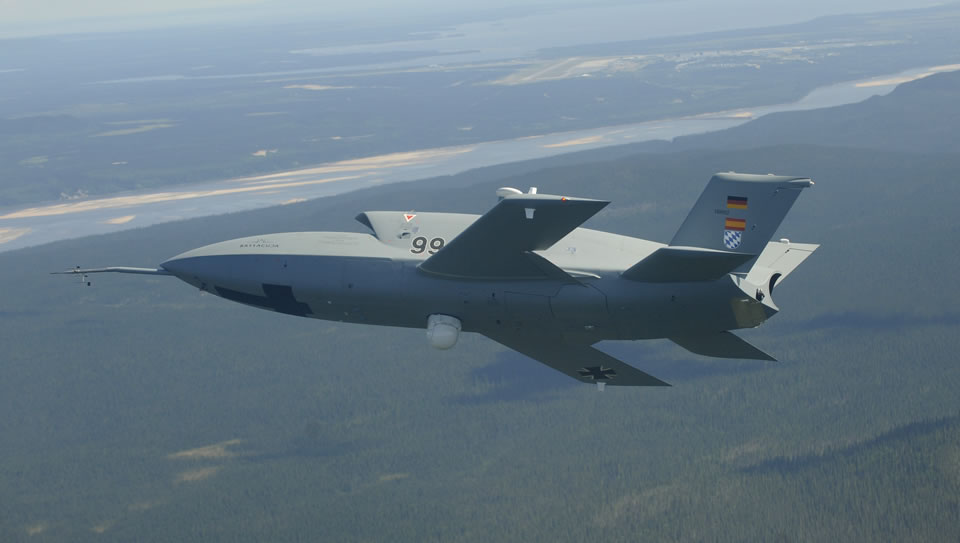

Cassidian has successfully carried out a series of test flights with its Barracuda UAS (Unmanned Aerial System) technology demonstrator at Goose Bay military test range in Canada. In the past month Barracuda testbed completed five test flights under the ‘Agile UAV in a Network Centric Environment’ (Agile UAV-NCE) program. These test series involved the Barracuda technology demonstrator flying in combination with another unmanned aerial vehicle, which was simulated by a converted Learjet. The two aircraft flew missions where they each had different role profiles that were autonomously coordinated and synchronised with one another.
The test flights provided an insight into several networked UAS oprations and the autonomous distribution of roles between unmanned aerial vehicles in complex mission scenarios. Although the role distribution was predefined in each test, coordination between the two UAS was largely automated. However, the missions could be adapted by uploading new mission files via datalink. Such mission files included new waypoints, and associated mission segments. The Barracuda again flew completely autonomously along pre-programmed flight profiles including auto-taxiing processes. The Barracuda and the Learjet simulating the second UAS were monitored from the ground station with respect to flight safety only.
Designed as a technology test bed, Barracuda has a modular structure and a flexible configuration, enabling a wide variety of systems and flight profiles to be tested and a wide range of mission requirements to be demonstrated. The avionics system was developed as an open and modular structure that allows a large number of sensors and data link solutions to be integrated with the demonstrator. Electro-optical and infrared sensors, laser target designators, an Emitter Locator System (ELS) consisting of Signals Intelligence (SIGINT) detectors and Synthetic Aperture Radar (SAR) systems can all be accommodated in the Barracuda’s payload bay.




















